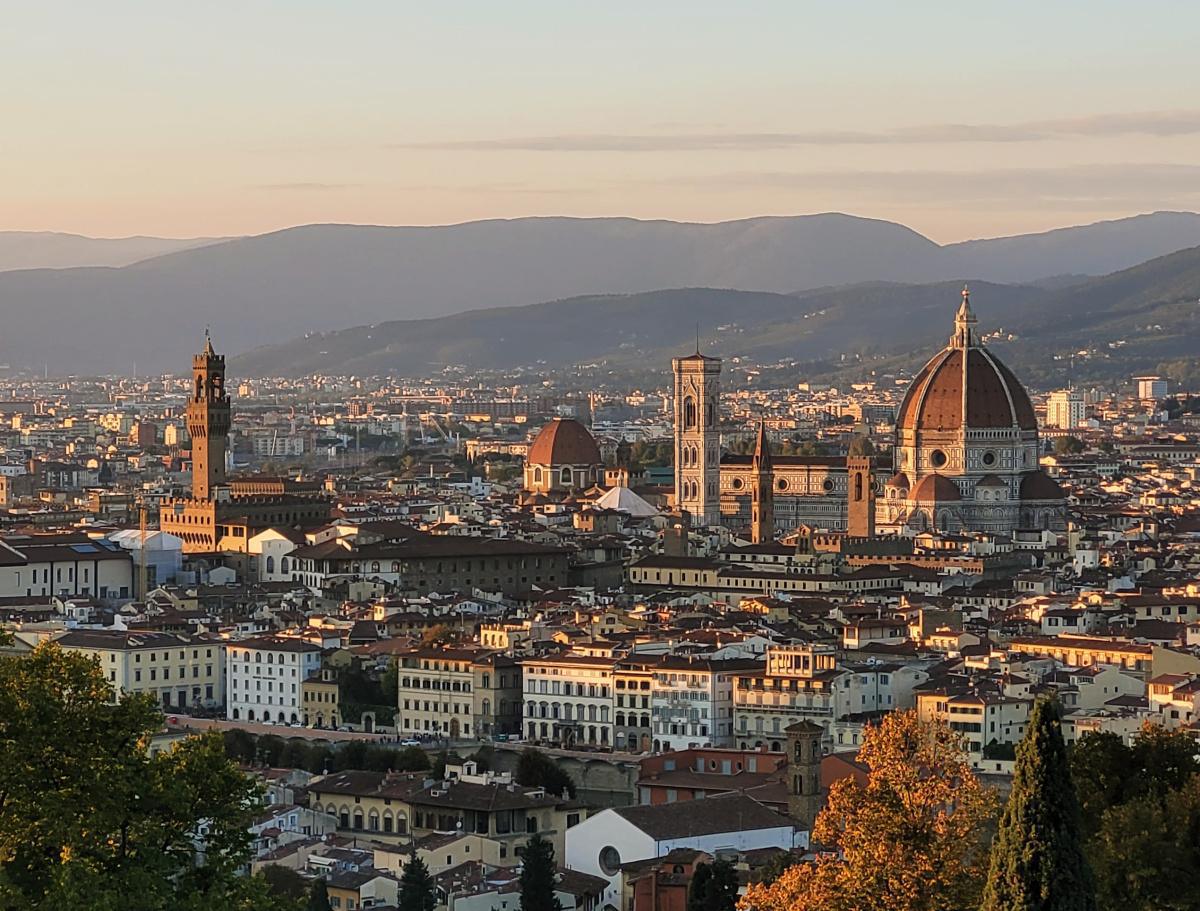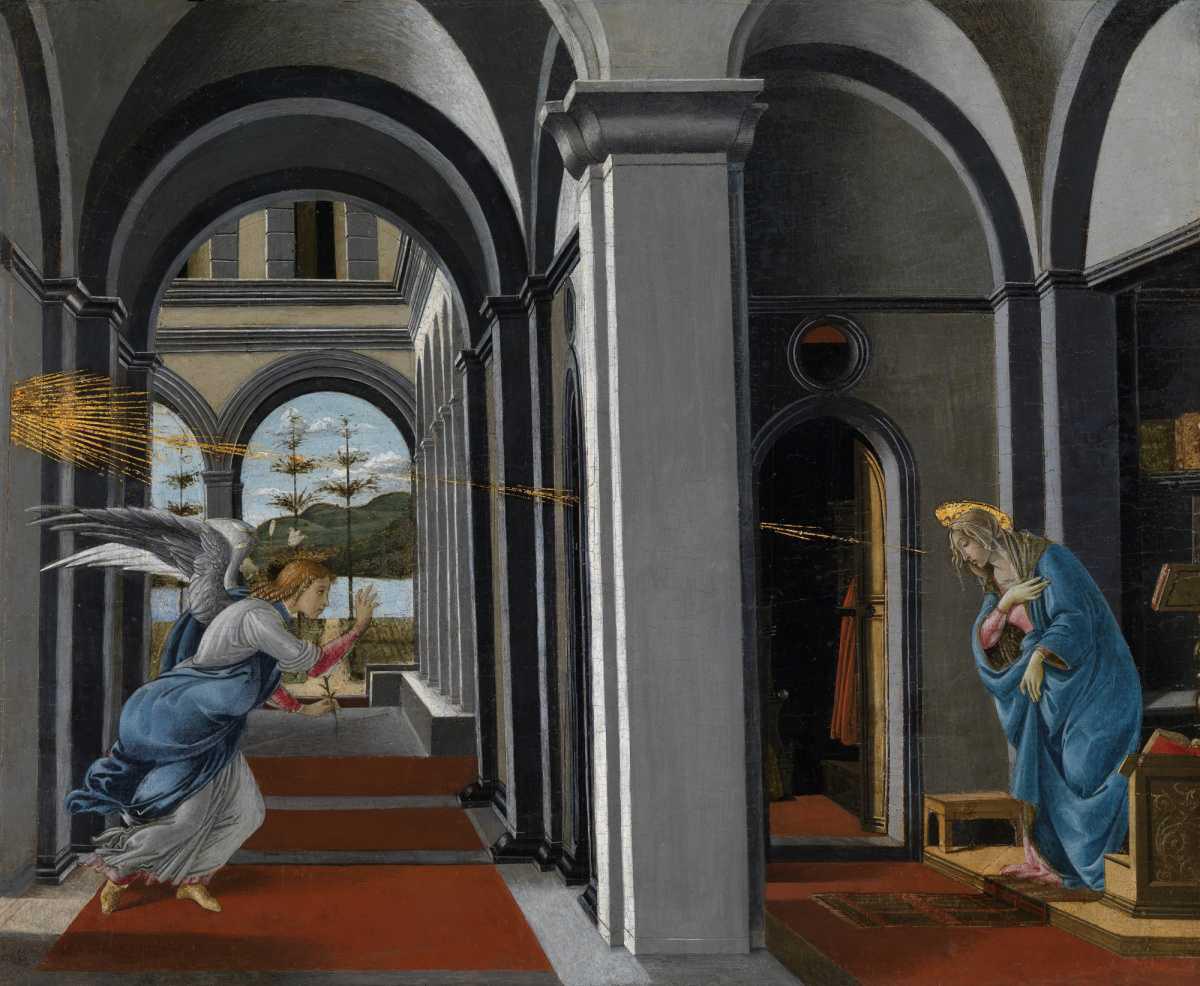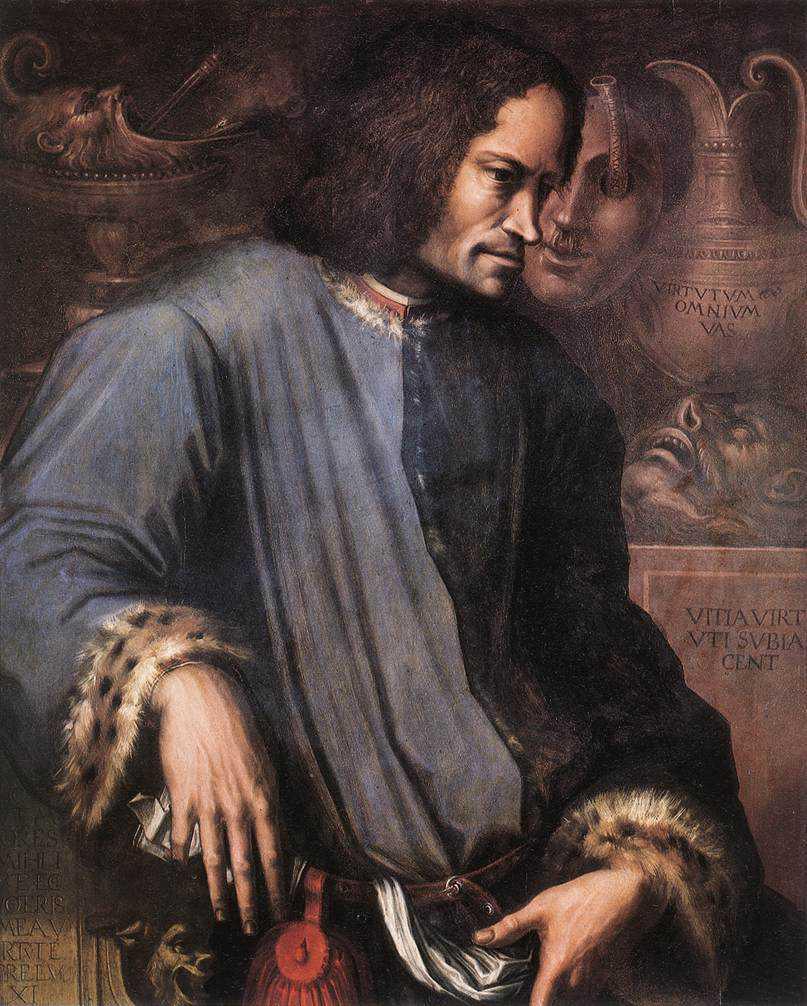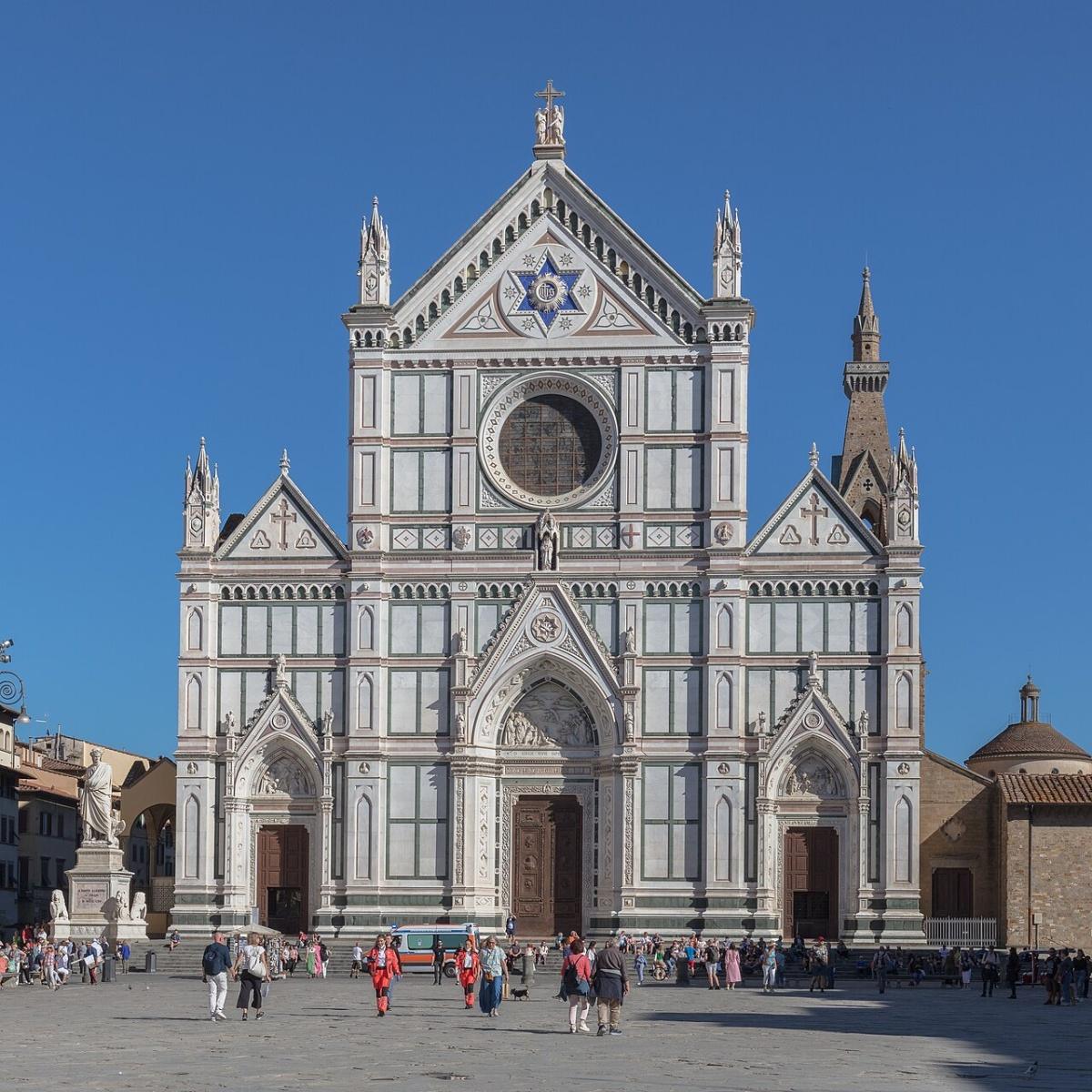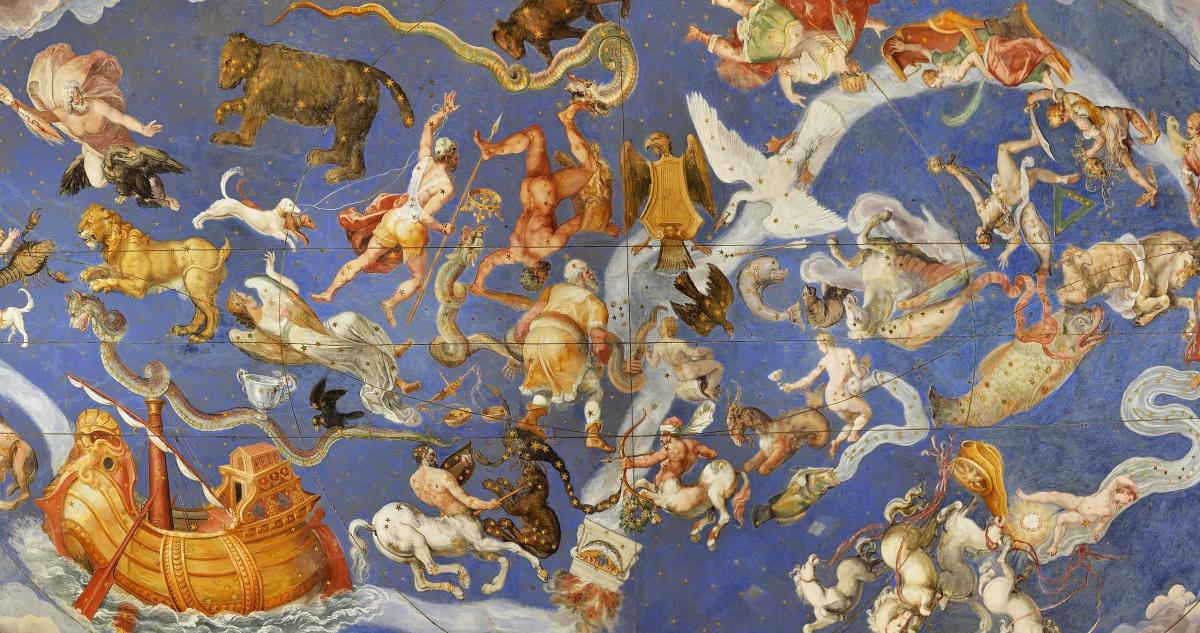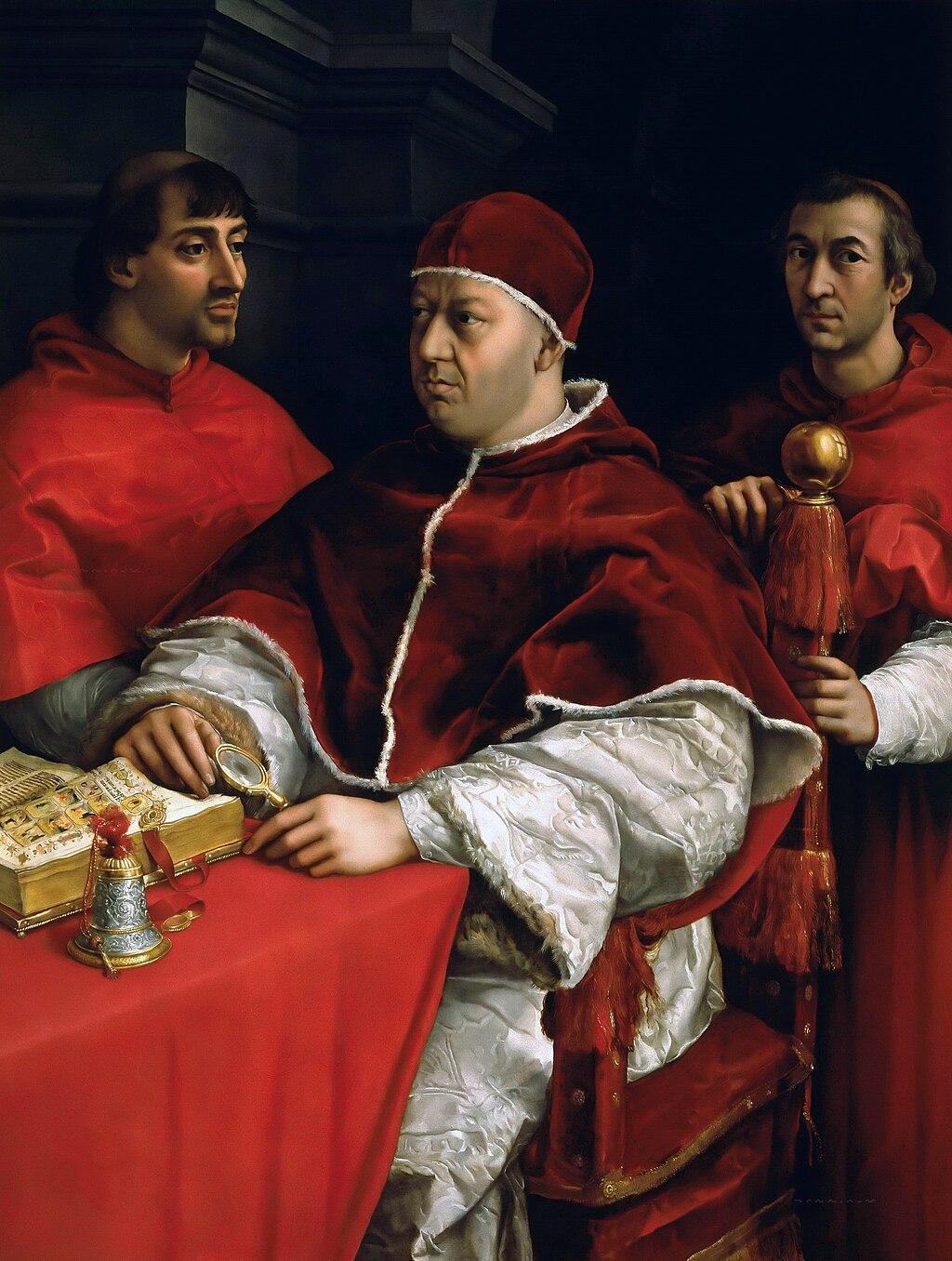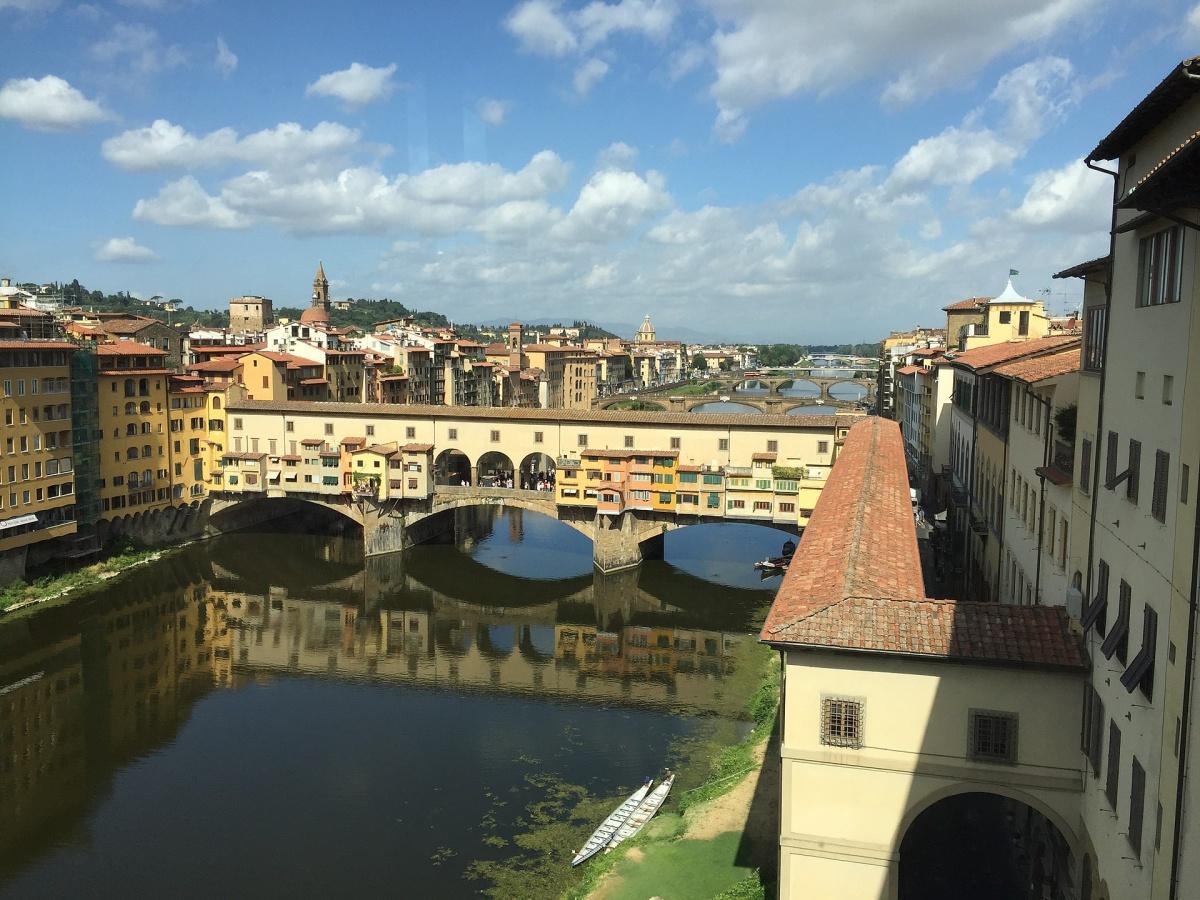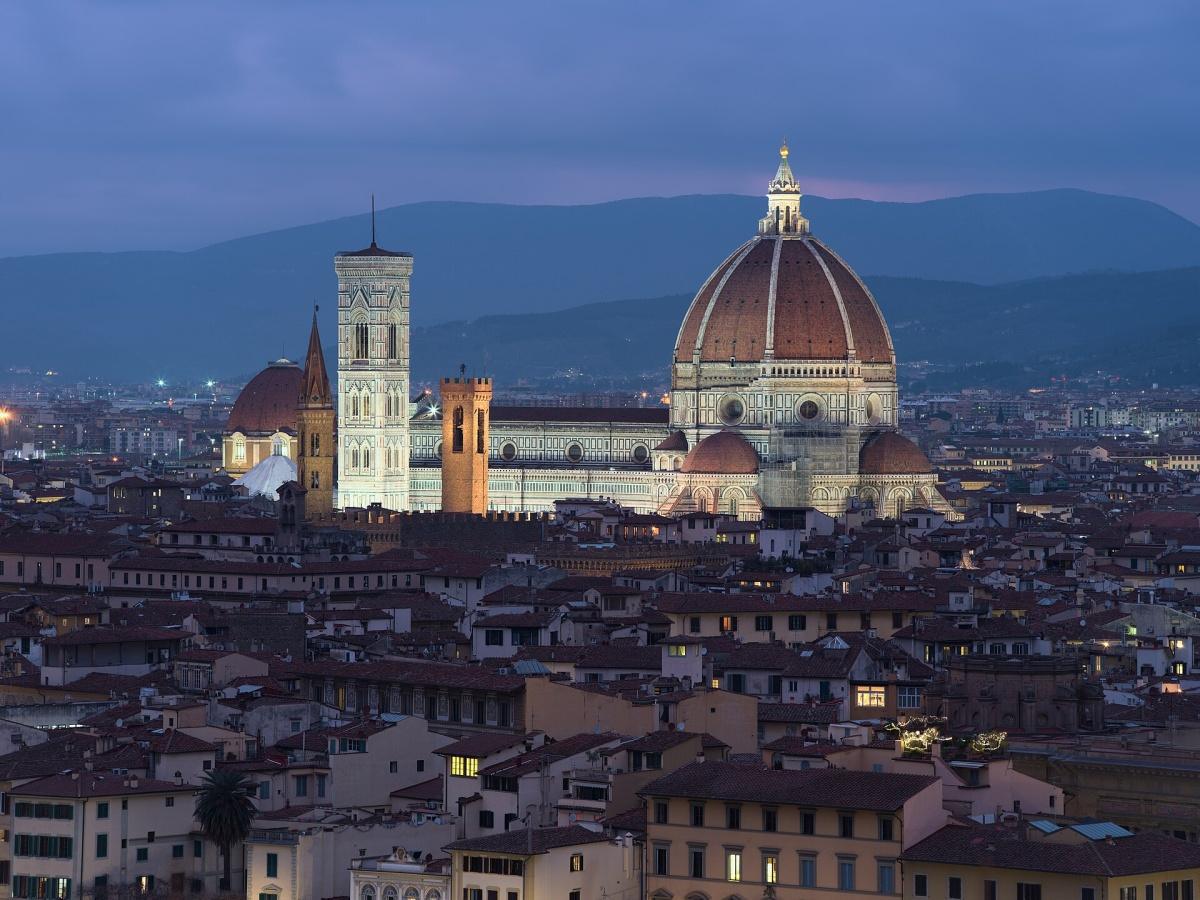Become a quick "Renaissance Man" on Florence
-
The Birthplace of the Renaissance
-
The Medici Family as a Major Influece in Florence
-
John the Baptist as the Patron Saint of Florence
-
Church of Santa Croce – Tombs of the Greats
-
A Center for the Revival of Mystical and Esoteric Ideas during the Renaissance
-
A Place of Ecumenical Council to Heal the Great Schism of 1054
-
The Medici Popes of Florence
-
Florence as the Capital of Italy
-
Florence as the Hometown of Dante
-
The Architectural Wonder of Florence’s Cathedral Dome
1. The Birthplace of the Renaissance
Florence is widely regarded as the birthplace of the Renaissance—a cultural rebirth that began in the 14th century and emphasized the art, science, and philosophy of classical antiquity, with a focus on humanism, realism, and the study of the natural world. As a prosperous city-state, Florence was home to wealthy merchant and banking families—most notably the Medici—who invested heavily in art, architecture, and scholarship.
Florentine artists were among the first to break with medieval artistic conventions. Medieval art tended to be flat, symbolic, and focused on conveying religious messages rather than capturing the natural world. In contrast, artists like Leonardo da Vinci and Michelangelo studied anatomy in detail, producing works that portrayed the human body with lifelike accuracy and emotional depth. Leonardo’s notebooks reveal dissections and observations that informed his paintings, such as The Last Supper and Vitruvian Man. Michelangelo’s David is not only a biblical figure but also an idealized study of the male form inspired by ancient Greek sculpture. Sandro Botticelli’s mythological works, like The Birth of Venus, marked a revival of classical subjects rarely seen in medieval Europe, namely Platonism.
2. The Medici Family as a Major Influece in Florence
The Medici family was one of the most powerful and influential families in the history of Florence. They rose to prominence through banking, especially with the success of the Medici Bank, one of the most respected financial institutions in Europe during the 15th century. Their wealth allowed them to gain political control in Florence, and over time, they became dukes, cardinals, and even popes. Their leadership turned Florence into one of the most important cultural and political cities in Renaissance Europe.
One of the Medici’s greatest contributions was their support of art, science, and philosophy during the Renaissance. They funded some of the world’s greatest artists like Michelangelo, Leonardo da Vinci, and Botticelli. But their support wasn’t just for artists. The Medici also backed important thinkers like Marsilio Ficino, a philosopher and priest who translated the works of Plato into Latin and helped introduce Neoplatonism to the West.
3. John the Baptist as the Patron Saint of Florence
St. John the Baptist has been the official patron saint of Florence since 1296. He was known for being a forerunner, calling people to change their ways, and preparing the way for Jesus. Interestingly, these qualities can later be connected to Florence’s cultural role as a forerunner of the Renaissance.
However, the connection between Florence and St. John the Baptist goes back even further, to at least the 6th century, when a small Christian baptistery was built in his honor. That building later became the Baptistery of San Giovanni, one of the most famous landmarks in Florence. It stands right across from the Florence Cathedral and is decorated with beautiful mosaics and bronze doors by artists Andrea Pisano and Lorenzo Ghiberti. Ghiberti’s doors, later called the “Gates of Paradise,” are considered masterpieces of Renaissance art.
4. Church of Santa Croce – Tombs of the Greats
The Basilica of Santa Croce is one of the most important churches in Florence. Built in the late 13th century, it is known as the final resting place of many of Italy’s most famous figures. Among the most well-known people buried there is Michelangelo, the legendary Renaissance artist famous for works like the David statue and the ceiling of the Sistine Chapel. He died in 1564, and his tomb is decorated with symbolic figures representing Painting, Sculpture, and Architecture—three fields in which Michelangelo excelled.
Nearby is the tomb of Galileo Galilei, the groundbreaking scientist who supported the idea that the Earth moves around the Sun. Galileo died in 1642, and his burial in Santa Croce shows how important he was to Florence and to science in general. Also buried here is Niccolò Machiavelli, the political thinker best known for his book The Prince, which gave a realistic and sometimes harsh view of politics and leadership.
In addition to these tombs, Santa Croce also has memorials to other important figures, including the poet Dante Alighieri. Although Dante is actually buried in Ravenna, Florence honors him with a large cenotaph (an empty tomb). Visiting Santa Croce is like stepping into a part of Italy’s cultural and intellectual history, all gathered under one roof.
5. A Center for the Revival of Mystical and Esoteric Ideas during the Renaissance
During the Renaissance, Florence played a leading role in the revival of ancient philosophical and mystical traditions. One of the most important movements was Neoplatonism, which reintroduced the ideas of Plato and his later followers. Neoplatonism taught that beyond the physical world exists a higher spiritual reality, and that the human soul could reconnect by contemplating higher Ideas such as Love and Beauty, and ultimately God. This philosophy emphasized the unity of all existence and the soul’s ascent toward perfection. Florence became a center for Neoplatonic thought largely because of Marsilio Ficino, a scholar who translated Plato’s works and combined them with Christian teachings.
Alongside Neoplatonism, some Renaissance thinkers revived interest in Hermeticism, a collection of esoteric beliefs based on legendary writings. Hermeticism combined astrology with Platonic philosophy, popularizing the idea that the human being is a microcosm of the universe. At its core, Hermeticism viewed Man as the center of the Universe, which made it especially appealing during the era of Renaissance Humanism.
The revival of these esoteric philosophies and mystical traditions was a defining feature of the Renaissance, representing a desire to recover ancient wisdom and combine it with contemporary religious thought. However, some of these ideas were viewed with suspicion by the Church. Certain Church leaders worried that Hermeticism promoted beliefs that conflicted with Christian doctrine, especially when they involved magic or secret knowledge. Yet, there were also sympathetic figures within the Church. The relationship between Renaissance philosophy and the Church was complex, involving both collaboration and cautious tension as new ideas pushed the boundaries of accepted belief.
6. A Place of Ecumenical Council to Heal the Great Schism of 1054
The Council of Florence (1431–1449) was one of the most ambitious ecumenical councils in the history of the Church. Its main goal was to resolve long-standing theological disputes and to heal the Great Schism between the Greek East and the Latin West, which had divided Christianity since The Great Schism (1054). After extended negotiations, the two sides reached formal agreements on several controversial issues, including the Filioque clause, the existence of purgatory, papal primacy, and the nature of the Holy Spirit’s procession.
The council marked a historic moment of attempted unity after nearly four centuries of division. The agreements were celebrated in the West as a major success. However, in the East, particularly in Constantinople, the union was widely rejected. Strong opposition from monks, theologians, and the general public led to the eventual breakdown of the agreement, despite its formal ratification at the time.
The Council of Florence was hosted primarily in the Basilica of Santa Maria del Fiore, also known as the Florence Cathedral. The event brought together leading church figures, theologians, and political leaders from across Europe and the Byzantine Empire, making Florence a symbolic site of dialogue and hope for Christian unity.
7. The Medici Popes of Florence
Florence was not only a center of art, philosophy, and politics during the Renaissance—it also played a significant role in the religious life of Europe through the powerful Medici family. Among their many accomplishments, the Medici produced two popes: Pope Leo X and Pope Clement VII. Both men were born into the ruling Medici family of Florence.
Pope Leo X, born Giovanni di Lorenzo de’ Medici, was the son of Lorenzo the Magnificent. A strong patron of the arts, he continued the Medici tradition by supporting artists like Raphael and commissioning grand building projects in Rome. He played a key role in the early years of the Protestant Reformation, notably through his decision to sell indulgences to fund the rebuilding of St. Peter’s Basilica, one of the practices that triggered Martin Luther’s 95 Theses in 1517.
Pope Clement VII, born Giulio de’ Medici, was Leo X’s cousin and also deeply involved in the religious and political conflicts of the time. His papacy coincided with some of the most turbulent moments of the Reformation, including the Sack of Rome in 1527 by the troops of Emperor Charles V, which humiliated the papacy. Clement VII also famously refused to annul the marriage of King Henry VIII of England, which led to the English break from the Catholic Church.
8. Florence as the Capital of Italy
In the 19th century, during Italy’s unification process, Florence briefly served as the capital of the newly united Kingdom of Italy. This period lasted from 1865 to 1871. The move to Florence was part of a political compromise while negotiations continued over the status of Rome, which was still under the control of the Papal States and protected by French troops.
During its time as the capital, Florence underwent significant changes to accommodate its new political role. New government buildings were constructed, and parts of the medieval city were modernized or demolished to make way for wider roads and administrative spaces. However, Florence’s time as capital was always meant to be temporary. In 1870, following the withdrawal of French forces, Italian troops entered Rome and annexed it into the Kingdom of Italy. The following year, in 1871, the capital was officially transferred from Florence to Rome, where it remains today.
9. Florence as the Hometown of Dante
Florence is the birthplace of Dante Alighieri, one of the most important literary figures in Western history. Dante is best known for his poetic work, the Divine Comedy. The work is divided into three parts: Inferno, Purgatorio, and Paradiso. In it, Dante imagines a journey through Hell, Purgatory, and Heaven, guided first by Virgil, a symbol of Reason, and later by Beatrice, a symbol of divine grace. The poem blends classical philosophy with Christian theology, and its imagery and moral insight have had a lasting influence on literature and art.
Though Dante was critical of corruption within the Church, especially of certain popes whom he placed in Hell, he remained a deeply religious man. The Divine Comedy is, at its core, a reflection on the soul’s journey toward God, and it affirms many central teachings of the Catholic faith, such as divine justice, repentance, and salvation. Dante’s use of allegory and theology made his work not just a literary masterpiece, but also a spiritual one.
10. The Architectural Wonder of Florence’s Cathedral Dome
The dome of the Cathedral of Santa Maria del Fiore is one of the most historically significant architectural achievements of the Renaissance. Designed by Filippo Brunelleschi and completed between 1420 and 1436, it was the largest masonry dome in the world at that time and remains the largest brick dome ever built. What made it truly revolutionary was the method of construction: Brunelleschi built the dome without using traditional wooden scaffolding or centering, a technique never before attempted on such a scale.
Brunelleschi’s dome is often seen as a symbol of Renaissance innovation, combining art, science, and engineering in a groundbreaking way. The dome not only solved a massive engineering challenge but also inspired generations of architects throughout Europe. Brunelleschi’s work directly inspired Michelangelo’s design of the dome of St. Peter’s Basilica in the Vatican City. As the crowning feature of the city’s cathedral, the dome became a visible beacon of Florence’s role as a center of culture and learning.
See Also:
Venice 101: Fascinating Facts about Venice
Check out our list of fascinating facts about Venice here.
Rome 101: Fascinating Facts About the City and Its History for Your Pilgrimage
Check out our list of fascinating facts about Rome here.
Stay Connected:
Sign up and get weekly updates with new locations, itineraries and videos.
Images by Hansjoerg Eberle, Livioandronico2013, Diego Delso & Dllu licensed under CC BY‑SA 4.0 — via Wikimedia Commons.


